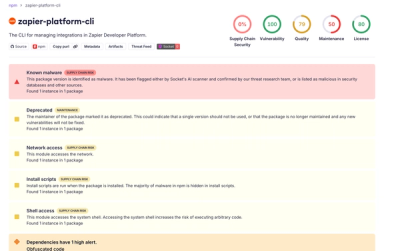node-intelhex
Conversion between binary and intel-hex files, and programmatic construction of intel-hex files.
Usage
var intelhex = require('@connectedyard/node-intelhex');
intelhex.binaryFileToIntelHexFile( "binaryFile.bin", "intelHex.hex" );
intelhex.intelHexFileToBinaryFile( "intelHex.hex", "binaryFile.bin" );
Binary Data to Intel-Hex
Convert a file using binaryFileToIntelHexFile( binaryFileName, intelHexFileName, startAtAddress )
Convert a buffer in memory using binaryToIntelHex( buffer, startAtAddress )
Use startAtAddress to specify the starting memory location of the first byte in the binary file. For example, the binary data
may need to be loaded at 0x18000, so use binaryToInelHex( buffer, 0x18000 )
Intel-Hex to Binary Data
Convert a file using intelHexFileToBinaryFile( intelHexFileName, binaryFileName, options )
Convert a text string to a buffer in memory using intelHexToBinary( intelHexString, options )
Use options to specify any of the following:
{
startAtOffsetZero: boolean, // default=false, binary file begins at address zero, even when first data address in intelFile is > 0
maxBinaryAddress: integer, // default=0x20000000, maximum binary address, determines size of buffer required in RAM
verbose: boolean, // default=false, logs processing to console
}
Programmatically Creating an Intel-Hex File
Build an intel-hex programmatically using var processor = new intelhex.BufferToIntelHexProcessor( startAddress ) and the following functions:
processor.setAddress( address ); // location for the next block data
processor.appendBuffer( buffer, littleEndian); // append data from buffer, default is littleEndian=false
processor.appendWords( words, littleEndian ); // append data from array of words, default is littleEndian=false
processor.appendHexString( hexString ); // append bytes from hex string
processor.writeHexStringAtAddress(address, hexString); // set the current address and append bytes from the hex string
processor.close(); // finish and append file terminator
var intelHexFileData = processor.contents; // retrieve finished data string
Brief Summary of Intel-Hex Formatting
From https://en.wikipedia.org/wiki/Intel_HEX
Only I16HEX formatting is supported, which supports 32 bit addressing through the Extended Segment Address.
The Intel Hex Line Format is :llaaaatt[dd...]cc
Where
- ll = data length
- aaaa = lower 16 bit address
- tt = record type
- dd = data (hex)
- cc=checksum = 2's comp of negative of sum of all record bytes
Record Types are
- 00 - data record
- 01 - end-of-file record
- 02 - extended segment address record
- 04 - extended linear address record
- 05 - start linear address record (MDK-ARM only)
This module only uses extended segment addresses (02)
The default hex line terminator is \n, which can be changed by setting processor.lineTerminator.



